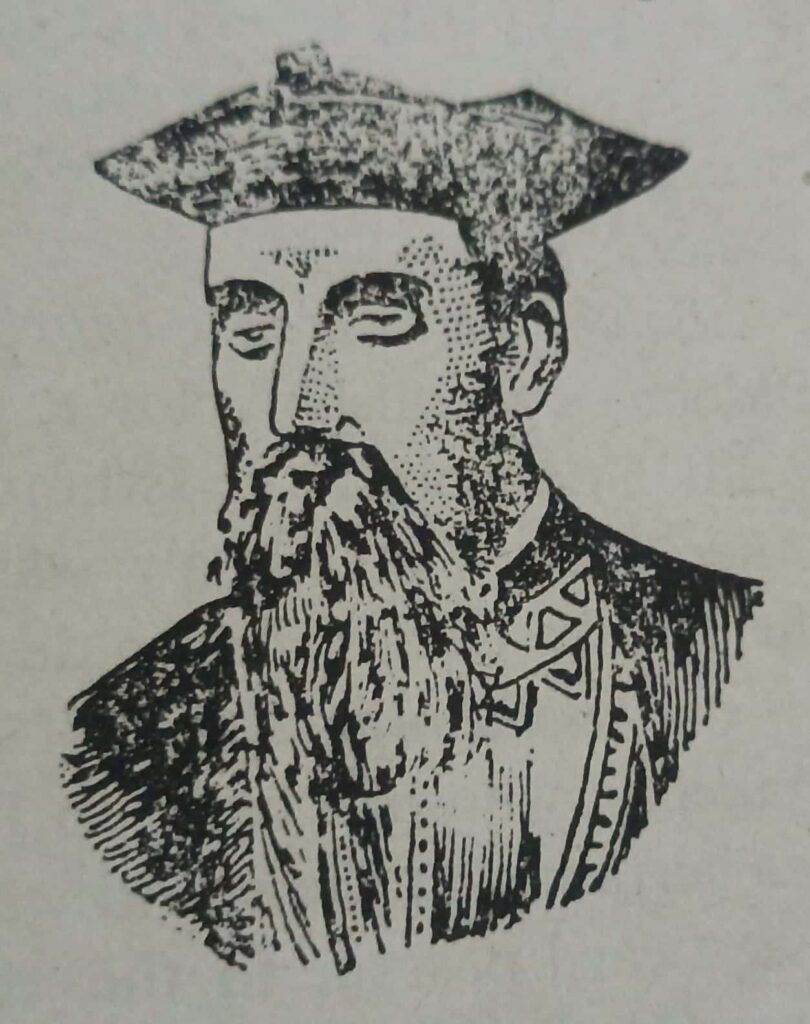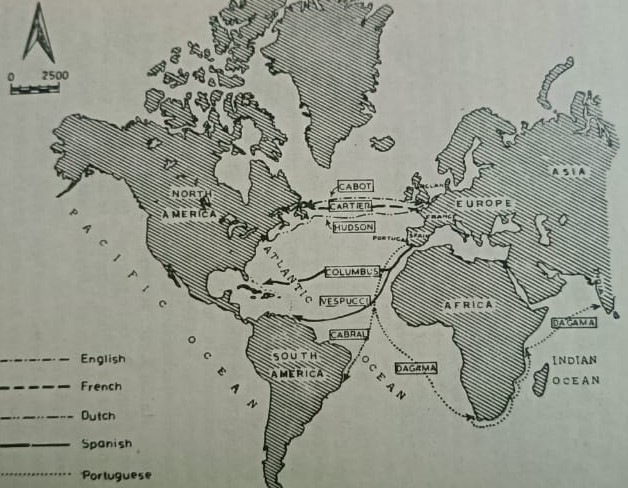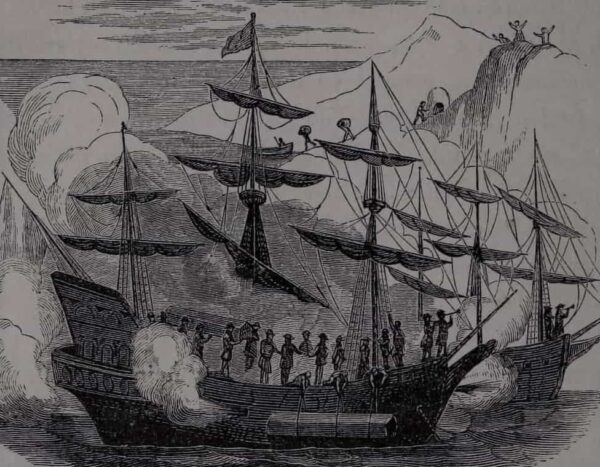Exploration of Geographical Discoveries of Portuguese Navigators
Europeans’ sense of adventure and intense curiosity were greatly encouraged during the Renaissance era. The only option available to the Europeans for obtaining commodities from the East was to rely on Italian traders after the Ottoman Turks captured Constantinople in 1453.
Thankfully, Italian trade with the Arabs both during and after the crusades was extremely successful. A group of Italian traders managed to reach China in the latter half of the 13th century, their land voyage took almost two and a half years.
One of them, Marco Polo, was given a cordial greeting in the realm of Kublai Khan, the Mongol emperor of China. He traveled to Japan and the Spice Islands. He told his buddies about his exhilarating encounter after returning to his hometown of Venice.
Since then, the Europeans have been able to travel to distant regions not just via land but also by sea because of their curiosity and sense of adventure.
Many Europeans were fascinated by Marco Polo’s trip to the East and his maritime voyage back. The Christian Church considered converting the millions of Eastern pagans who lived there. Many businesspeople started to consider how trading with the east would increase their earnings by a factor of four.
Contributing Factors to Geographical Discovery
Fortunately, a number of circumstances helped European kings and merchants achieve their goals. The knowledge the Europeans gained about the mariner’s compass and the astrolabe was the most significant of these. The Chinese devised the first to help them know where they were going and the second to help them find their way to a specific location.
Second, the Europeans started to construct superior ships that were utilized for lengthy voyages. The school founded by the Portuguese prince Henry “the Navigator” provided vital information about the winds, tides, and wave action to the sailors of the late 15th and early 16th centuries (1394-1460).
The “greatest sailors, astronomers, and geographers of Europe” came to Prince Henry’s School of Navigation to share their knowledge with others. Annual nautical excursions throughout West Africa’s coast were sent by the school.

His explorers reached Sudan and Senegal in addition to the Madiera Islands. They opened the path for the Portuguese empire during the following century by bringing slaves and treasure.
Portuguese Sailor Explorations
The equator was crossed by Lopo Gonsalves, and Bartholomew Diaz arrived at the Cape of Storms (also known as the Cape of Good Hope) in 1487, among the Portuguese’s subsequent maritime exploits.
Vasco da Gama embarked on his voyage ten years later and followed Diaz’s path. He sailed for a brief period along the east coast after passing the Cape of Good Hope. He discovered how to sail into India with the aid of Arab sailors. 1498 saw his arrival in Calicut.
The most important event in not just Asia’s and yet also Europe’s history was Vasco da Gama’s discovery of a new sea route to India.
A storm blew a Portuguese commander named Cabral off track as he was sailing down the west coast of Africa two years later, but he eventually made it to the east side of South America. Brazil was so founded in 1500.
The New continent is Found by Columbus
Most likely, the first people to set foot on the mainland were the Vikings, who did so as the Roman Empire was being overrun by barbarians.
A Genoese sailor named Christopher Columbus had plans to find a new sea route to the East after roughly a thousand years. On August 3, 1492, he set sail throughout the then-unknown Atlantic after receiving financial help from King Ferdinand and Queen Isabella.
On October 2, 1492, he arrived on the island of the Bahamas after a protracted and challenging expedition. He believed he had arrived at the Indian coastline. He referred to the Bahamas’ indigenous as Indians. He traveled to visit Haiti and Cuba. He traveled on three more occasions, discovering the Caribbean Sea’s islands. With his king and queen, he appropriated all the lands that he had found.
The Pope had to step in to resolve their conflict by defining the lines of control for each after the Portuguese developed a jealousy of Spain’s newly acquired possessions.
However, Columbus’ newly found continent of America was later given the name Amerigo Vespucci, after the Italian explorer.
He conducted additional research in the regions Columbus had uncovered and came to the realization that this wasn’t India, as Columbus had thought, but rather a new world. A German geographer “proposed that the New World be dubbed America in honor of America” because of this.
In 1513, Balboa made the Pacific Ocean his own
Spanish adventurer Vasco Nunez de Balboa journeyed to the new world in pursuit of wealth. He crossed the Panamanian Isthmus and peered over the opposite side.
The Pacific Ocean was what he perceived to be a vast, blue expanse of water.
Ferdinand Magellan’s circumnavigation of the globe (1519-22)
Along with Vasco da Gama, Magellan had traveled to India and was of the opinion that the world resembled a globe. He was looking for a route from the west to the east. He didn’t give up after the king of Portugal rejected his request for funding the project.
His request was granted by King Charles I of Spain, who is the granddaughter of Queen Isabella. He left Spain in September 1519 with five ships and 267 crew members.
He arrived at the South American shore and began to sail south. He crossed the straits that are now known as the Straits of Magellan at the point.
He dove into the Pacific. He lost a lot of good sailors to famine and disease. In the Philippines, he arrived. He was killed in a conflict with the locals here. In 1522, his ship, the “Victoria,” arrived in Spain with some crew on board.
Mexico is subjugated by Hernando Cortez (1519)
One of the most successful Spanish conquistadors of the early 16th century was Hernando Cortez. He arrived in Mexico with his forces, engaged the indigenous people known as the Aztecs, and won the battle. Cortez took over as the Spanish governor after they overthrew their sovereign. Another Spanish explorer named Francisco Pizarro entered Peru in 1533 and overthrew the Inca emperor.
The Incas were enraged when he set up a puppet. However, because all of the Inca kings were assassinated by the Spanish, the Incas were unable to mount a revolt. For their own gain, the Spaniards compelled the inhabitants of Mexico and Peru to labour in silver and gold mines.
The Spaniards started bringing slaves from Africa to work there as resistance grew. Many indigenous were converted to Christianity by Spanish missionaries. In this way, Spain expanded its authority across the new continent.
Findings made by English explorers
An Italian by the name of John Cabot was one of the several explorers who were looking for a new sea passage to the east in the late 15th century. King Henry VII hired him to find a northwest route over the Atlantic to reach India.
He started out in 1497 and arrived at Cape Breton Island after sailing across the Atlantic (near New- foundland). Cabot believed he had arrived in China. The English were able to claim a large portion of North America because of his discovery of the Canadian east coast.

The east coast of North America was then visited by English sailors like Drake, Gilbert, and Carolina during the latter quarter of the 16th century, and they claimed areas from St. Lawrence to Florida.
Throughout the first half of the seventeenth century, the English commercial business also founded its operations in India.
French investigations
A Frenchman by name of Jacques Cartier traveled up the coast of North America, much like the early English explorers, in search of a northwest route to China.
The St. Lawrence River was founded by him in 1535. Quebec was founded by Champlain Marquette, a different French explorer, in 1608.
In 173, Joilet traveled over the Mississippi River Valley. La Salle investigated the Mississippi River mouth. France thus claimed the entire area between the Canadian portion of the St. Lawrence River and the Mississippi River’s mouth.
New France and Louisiana were the names of the northern and southern halves of this territory, respectively (named after King Louis XIV).
The Dutch and Henry Hudson make a Claim
Henry Hudson, an English adventurer, was hired by the Dutch in 1609 to search for a north-western passage. He made it possible for the Dutch to annex the area around the Hudson river by finding the Hudson river.
The Dutch also attempted to break through the northern Ice Land barrier but were unsuccessful. They did, however, find Spitsbergen, a collection of islands in the Arctic cap, thanks to their explorer Berents.
Conflicting assertions result in wars
Each European power staked a claim on vast territories that it had found and that its opponent did not appreciate. Wars were thus waged on the new continent between competing European nations.
For instance, in the East, the Portuguese fought the Dutch. They developed a sense of enmity for Spanish territories on the new continent and put up a fight.
Additionally, England and France developed rivalries in different worlds and fought conflicts in both India and Europe.
The Spanish Armada threatened to attack England as England and Spain grew into savage rivals in the late 16th century. However, the Spanish were routed at sea.

